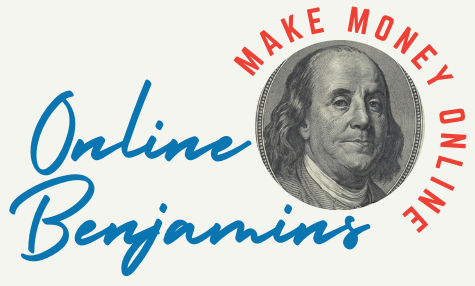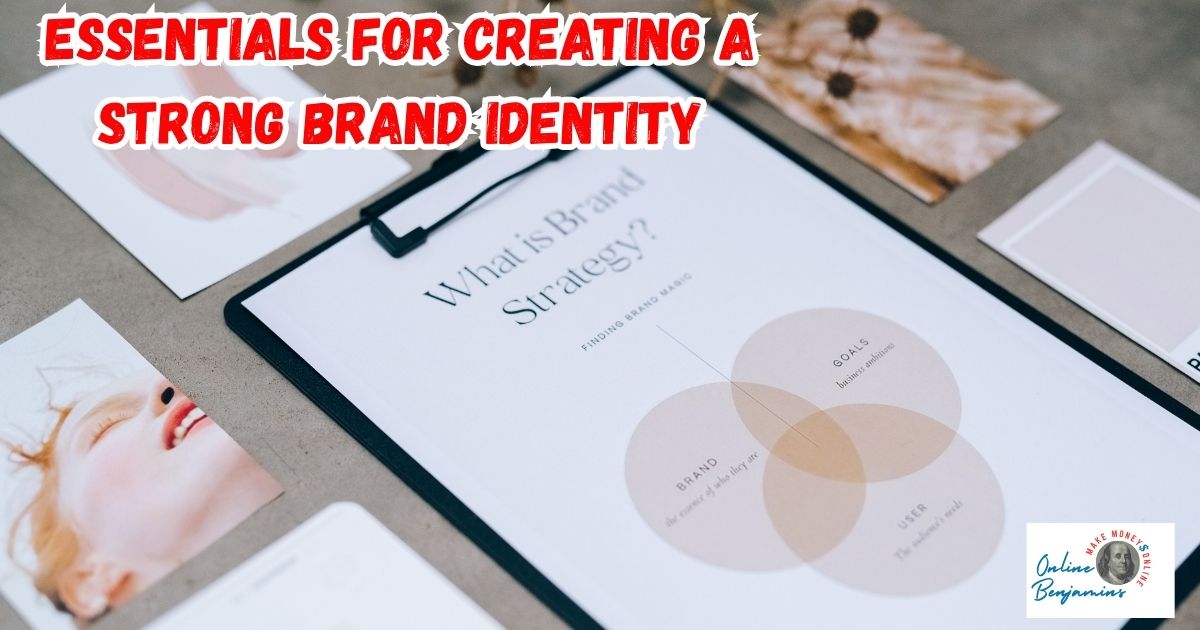Building a strong brand identity has shaped how I connect with customers, earn their trust, and keep my company top of mind in crowded markets. It’s not just about a logo or a catchy slogan. Brand identity covers everything from what I stand for to how others see my business. When I took the time to clarify and strengthen my own brand, I noticed more consistent recognition and deeper loyalty from my audience.
QUICK LOOK: – 5 Steps to Building a Strong Brand Identity
- Establish the Core of Your Brand: Before thinking about colors or design, I find it really important to lay the foundation of what the brand stands for. This step influences every other choice, from messaging to visuals.
- Create a Visual Identity: Visual identity covers everything from the logo to the images I share on social media. If I keep these visuals consistent, I start building real recognition and trust.
- Define a Clear Brand Voice and Messaging: How your brand “talks” is just as important as how it looks. The words and style I use build up the personality of my brand, making it feel friendly, professional, or playful depending on what fits best.
- Ensure Consistency: A strong brand only works if every person and platform tells the same story. After developing my strategy, visuals, and messaging, I focused on using all those elements anywhere customers interact with my business.
- Review and Grow: Customer tastes and market trends change, and I want my identity to stay relevant and reliable. The ride of building a brand doesn’t end at launch. Regular check-ins help you make sure your efforts keep paying off.
Every business, whether large or small, can benefit from a clear identity. If you’re ready to improve your brand, these five steps will help you cover all the essentials for a memorable and trustworthy presence. Creating an identity that’s true to you is the secret ingredient for standing out in today’s busy world; let’s jump into the details on how to make your brand shine and connect with people genuinely.
Step 1: Establish the Core of Your Brand
Before thinking about colors or design, I find it really important to lay the foundation of what the brand stands for. This step influences every other choice, from messaging to visuals. Here’s how I approached this stage:
- Brand Purpose and Mission: I defined why my business exists beyond just making money. For example, I asked myself what problem I’m helping customers solve and what my bigger mission is as a company.
- Target Audience: Understanding my audience changed how I spoke and what I offered. I researched their needs, hobbies, and concerns. This helped me connect with them much more effectively.
- Core Values: I wrote down the beliefs and principles that guide my decisions. These core values help keep things genuine and give both customers and my team a sense of purpose.
- Competitor Analysis: Looking at who else is in my space, I pinpointed what makes me different. I saw which gaps I could fill and what I could offer that others didn’t.
- Brand Positioning: Using all the above, I crafted a clear statement about where my brand fits in the market, who it’s for, and why it’s worth noticing.
Questions I Asked Myself:
- What is my company really passionate about?
- Who am I hoping to help or inspire?
- What values drive my decisions, even when it’s hard?
- Who are my main competitors, and how am I different?
Answering these questions made everything after this step much easier. The clearer I am on my purpose and values, the more authentic my brand becomes. Sometimes digging into your own experience helps uncover new angles to reach your audience, so don’t shy away from being honest in your reflections.
Step 2: Create a Visual Identity that Reflects Your Brand
The way my brand looks is often the first thing people notice about my business. Visual identity covers everything from the logo to the images I share on social media. If I keep these visuals consistent, I start building real recognition and trust. Strong visuals also help your team stay on the same page, so nobody strays off-brand when making new materials.
Elements I Focus On:
- Logo: I designed a logo that is simple and easy to remember. I kept it unique, but also versatile, so it looks good in different sizes and on various materials.
- Color Palette: I stuck with a small group of colors for everything from my website to my packaging. For instance, I use calming blues and greens to suggest reliability and growth.
- Typography: I selected fonts that matched my brand’s personality. Keeping font choices consistent helps all my materials look like they belong together.
- Imagery and Graphics: I set guidelines for what style of photos, icons, and graphics to use. For example, I use bright, natural imagery when I want a friendly and energetic look.
Tips for a Strong Visual Identity:
- Choose a logo that works both in color and black and white.
- Keep color choices limited, so your brand feels focused and reliable.
- Use the same style of images everywhere to create a cohesive feel.
- Pay close attention to trends, but always stay true to the core of your brand. Jumping on every trend can make your identity feel scattered; stick with what feels right for your goals and values.
It took some trial and error to get visuals just right, but sticking to the same look across different platforms made my brand instantly recognizable. It’s worth the extra work upfront—every design choice should point back to your core identity.
Step 3: Define a Clear Brand Voice and Messaging
How my brand “talks” is just as important as how it looks. The words and style I use build up the personality of my brand, making it feel friendly, professional, or playful, depending on what fits best. Bringing your voice in line with your values keeps it real and memorable, whether you’re sending emails or drafting packaging copy.
How I Developed My Brand Voice:
- Brand Personality: I came up with three to five words that describe my brand as if it were a person. For my own work, words like “approachable,” “reliable,” and “resourceful” fit well.
- Consistent Tone: I made sure my tone matched across emails, social posts, my website, and every other channel. Consistency here has helped people recognize my business, even if they only read a sentence or two.
- Brand Story: I shared the background of my business in a relatable way. I talked about how I got started, what inspired me, and how my product or service helps others. A real story goes a long way in building strong connections.
- Slogan or Tagline: I distilled my promise or main benefit into a short statement. Keeping it short made it stick in people’s minds. Don’t underestimate the power of a catchy phrase—they really help with quick brand recognition.
Checklist for Brand Messaging Consistency:
- Are all communications written in the same voice?
- Does the language reflect my brand’s core values?
- Is my story clear and relatable?
- Do I have a memorable slogan or phrase?
Persistent and clear messaging sets the mood for every customer interaction, so review your copy often to ensure it matches your brand’s identity. Small tweaks to word choice can make a big difference in how you’re perceived.
Step 4: Ensure Consistency Across Every Touchpoint
A strong brand only works if every person and platform tells the same story. After developing my strategy, visuals, and messaging, I focused on using all those elements anywhere customers interact with my business. Customers quickly come to rely on these signals—they help build lasting trust.
Ways I Achieved Brand Consistency:
- Brand Guidelines: I created a simple reference sheet covering logos, colors, fonts, messaging tone, and image styles. Sharing this with anyone who creates materials for me made keeping things aligned much easier.
- Consistent Marketing Materials: Every business card, brochure, social post, and website page follows the same guidelines. Customers always know it’s my brand, no matter where they see it.
- Staff Training: I made sure my team knows what the brand stands for and how to communicate and behave consistently with our values. This shows through customer service and everyday interactions.
- Delivery of Brand Promise: The real test is whether the experience matches what I promise through positioning and messaging. If I claim to offer “fast support,” I need to respond quickly and helpfully every time. It’s all about matching customer expectations at each step of the journey.
Step 5: Review and Grow Your Brand Identity Regularly
Even with everything running smoothly, I know my brand needs ongoing attention. Customer tastes and market trends change, and I want my identity to stay relevant and reliable. The ride of building a brand doesn’t end at launch. Regular check-ins help you make sure your efforts keep paying off.
How I Keep My Brand Strong Over Time:
- Monitor Performance: I track feedback through surveys, social media, and analytics. This helps me see what’s working and what might need a tweak. Sometimes numbers tell a story you might miss from regular day-to-day work, so don’t skip this step.
- Get Honest Feedback: Hearing directly from customers shows me what’s clear and what’s confusing about my brand. I listen carefully and am open to necessary changes. If your audience brings up the same issues, it’s a sign your brand may need an update.
- Stay Current: I keep an eye on successful competitors and changing tastes so I don’t fall behind. Markets move fast, and small adjustments can keep your business looking fresh and sharp.
- Regular Brand Audit: At least every year, I review my strategy, visuals, and messaging. If something no longer fits or feels outdated, I’m not afraid to make adjustments—even small tweaks can show customers that you care about staying relevant.
My approach to a strong brand identity is always growing, just as my business and audience do. Being open to change keeps my brand relevant and lets customers know I’m paying attention. Whether it’s freshening up visuals or tightening messaging, consistent updates show commitment.
Frequently Asked Questions & Practical Tips
How long does it take to develop a strong brand identity?
From my experience, you can lay the foundation in a few weeks if you focus. Fine-tuning visuals and messaging might take a month or two. Maintaining and tweaking your brand is an ongoing process, so be patient and persistent as the benefits compound over time.
Do I need to hire a professional designer?
If the budget allows, a designer can help bring your vision to life, especially for logos and branding materials. I’ve also used online design tools and templates for smaller projects and updates as my business grows. Sometimes a fresh perspective from outside your team is all you need to level up your visuals.
What if my brand already exists but feels weak?
I recommend doing a full audit. Check for inconsistencies in visuals and messaging, and ask customers for honest feedback. Sometimes, even a small update makes a big difference. Don’t be afraid to revisit your roots and make sure everything still lines up with your goals.
The Essentials to Remember when Building Your Brand Identity
My brand’s identity is a mix of purpose, personality, and how consistently these come through at every touchpoint. Keeping these elements honest and matched up has been a practical way to create trust and make my business memorable.
Each step I’ve shared helps you build a strong, lasting impression—one that can adapt as your business grows and your customers’ needs change. Your brand identity isn’t just what people see, it’s how they feel when they interact with you. Stay flexible, stay real, and your brand will stand the test of time.
Check Out Our Most Recent Articles:
- The Impact Of AI On Content Personalization

- How To Build A Social Media Engagement Strategy in 7 Steps

- How To Develop A Consistent Brand Look And Feel

- How To Craft Engaging Social Media Content

- How To Define Your Unique Brand Voice

- “Social Media Influencing: Building Your Brand And Income”

Wishing You Much Success in Building a Strong Brand Identity,

- onlinebenjamins.com
- thebeachangler.com
- thesinnerinthemirror.com
- Facebook: Online Benjamins
- Twitter: @onlinebenjamin1
- Instagram: dotcomdinero
- YouTube: Online Benjamins
Rex
P.S. If you have any questions or are unsure of anything, I am here, and I promise I will get back to you on all of your questions and comments. Just leave them below in the comment section. Follow me on Twitter: @onlinebenjamin1, Instagram: dotcomdinero, and Facebook: Online Benjamins.
Hi,
Thanks for stopping by and congratulations for taking the first steps to building your own online business. I’ve been in business both offline and online since 1997. I would consider it an honor to help you build your business. Father of 3, life long outdoorsman with an education in Genetics and Economics. This site is about cutting through the BS and finding the real opportunities in the online world. I look forward to working with you.



